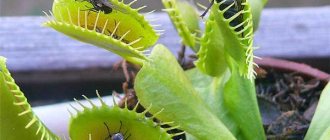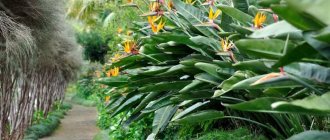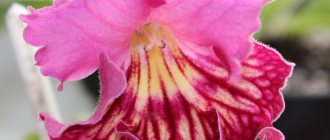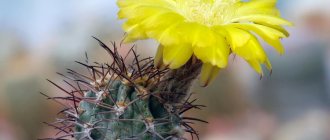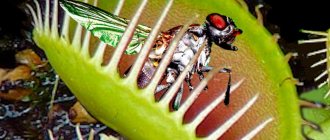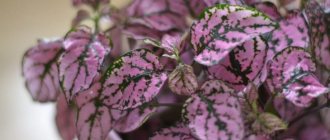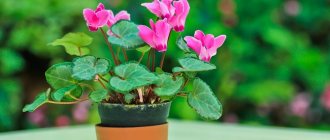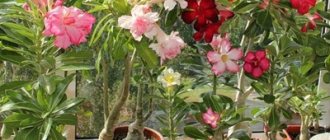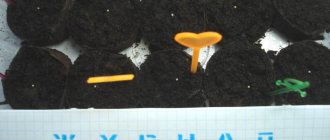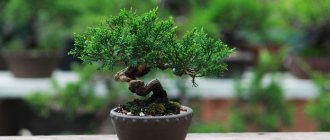Carnivorous plants arouse great curiosity and interest among people. This is because they are unusual and very attractive looking. One of them is the Venus flytrap, a predatory exotic plant whose wild forms grow on the marshy coast of the Atlantic Ocean.
Fans of indoor floriculture all over the world want to get their hands on this flower for cultivation. But is it possible to grow a Venus flytrap from seeds? You will find answers to this and other questions about flower care by reading this material.
What kind of flower is this
This plant has been known to people for 300 years. The study of this insect hunter began in the 18th century. The flower has several names. He received one of them for his attractiveness in honor of Dionea, who was the mother of the beautiful Aphrodite.
People at all times have tried to introduce this miracle of nature into pot culture. When it became clear what conditions were needed to grow dionaea at home, it began to decorate the windowsills of many houses. A flower in an apartment performs 2 important functions. Due to its decorative nature, it decorates the room. In addition, it relieves owners from annoying mosquitoes and flies.
Description and characteristics
The Venus flytrap, or Dionaea, is a genus of carnivorous plant. Its wild forms are found on the Atlantic coast of the United States. Grows in marshy, moist soils. Swampy peatlands contain little nitrogen, but this is not a problem for Dionaea, since it receives this nutrient from its victims.
The species is represented by low-growing herbaceous forms that do not have a trunk. The plant has a short underground stem, from which 4 to 7 leaves grow, collected in a rosette.
The length of the leaves ranges from 3.5 to 7 cm. Outwardly, they look like traps with spikes along the edge. The color of the leaves is light green, and their inner surface is painted in red tones. They emit a smell that attracts insects. In addition, the leaves produce special enzymes that help digest caught insects.
The insect trap is made of 2 sheets, which have hairs along the edge for stronger adhesion to each other when the trap slams shut. The insect, attracted by the smell of nectar, lands on the inner petals. This causes irritation of special signal hairs, and the trap quickly slams shut.
When the leaf blades completely close, a cavity is formed with the function of a stomach. The food obtained is digested and absorbed in this cavity. This takes 7-10 days. Then the trap opens again and the plant is ready to capture the next victim. In the natural environment, the Venus flytrap preys on insects and mollusks. Each trap can catch and digest 3 victims, and then it dies.
With the onset of winter, the appearance of Dionaea changes. Its leaves die and it seems that the flower has died. However, with the advent of the first rays of the sun, the carnivorous plant comes to life again and prepares for the hunt. Under good conditions, Dionaea can live 20 years.
Is it possible to grow it at home?
Since humanity discovered this wonderful flower, attempts have been made to introduce it into culture. Over time, it became clear what conditions were needed to grow Venus flytraps on windowsills. Now Dionaea can be found in many homes where it grows successfully.
Optimal growing conditions
Dionaea reacts very sensitively to unsuitable growing conditions. When growing it at home, all care work must be carried out in a timely manner and a comfortable microclimate must be created. The following describes what requirements a carnivorous plant makes for normal development.
- Lighting. The light should be bright enough, but diffused. The sun's rays in this form should fall on the flower for 5 hours, mainly in the morning and in the evening. The sun can cause the Venus flytrap's root system to overheat. To prevent this, the pot is wrapped in reflective material. With a lack of light, the leaves turn pale and the plant stretches. The problem can be solved by installing additional lighting with fluorescent lamps.
- Place for a potty. Dionaea grows best on the windowsills of eastern or western windows. If there is no such accommodation option, and the apartment’s windows face south, it’s not a problem. Place the pot on a south-facing window and provide shade. Dionaea reacts poorly to movements, so you need to immediately find a suitable place for it.
- Air exchange. Fresh air has a beneficial effect on the Venus flytrap. In summer, you can take the flower pot out onto the loggia or even into the garden. If both are not available, you need to regularly ventilate, avoiding drafts.
- Room temperature. This genus belongs to heat-loving plants. In the warm season of the year, it is necessary to provide the dione with a temperature range of 23-30 degrees above zero, and in winter +10 degrees is enough.
- Irrigation. Both waterlogging and drying out of the soil should not be allowed. The top of the soil is constantly kept slightly moist. To preserve moisture, mulching with moss is a good idea. Irrigation is best carried out using the bottom watering method, when the calculated amount of water is poured into the pan. In extreme heat, you need to humidify the air around the flower with a spray bottle.
- Rest period. In autumn, the plant enters a dormant period. Its leaves dry out, turn black and fall off. Externally, the flower seems lifeless. There is no need to panic or take any resuscitation actions, since this is a natural process. You just need to move the pot of dionaea to a dark, cool place and wait until mid-February, sometimes moistening the soil. With the arrival of spring, active growth of the Venus flytrap will resume.
Where to get seeds
Venus flytrap seeds can be obtained independently from an adult plant or purchased at commercial gardening centers. If your friend has Dionaea and you are going to take seeds from it for propagation, then you will have to work hard. At home, seeds can only be grown using artificial pollination.
Getting your own seeds
In the spring, when Dionaea enters the flowering phase, you need to use a paint brush to transfer pollen from one plant to another. The flower will be fertilized and after 30 days the ovaries will appear. The fruit of Dionaea is a capsule containing from 20 to 30 black shiny achenes. The ripened seeds are stored in the refrigerator in paper bags. They will become suitable for sowing 150 days after harvest.
Important! For artificial propagation, a plant that has already overwintered at least once is suitable.
Is it possible to order from China on Aliexpress?
In recent decades, with the development of the Internet, seeds began to be ordered through the World Wide Web. On the Internet you can find quite a lot of online stores that sell seeds of vegetables, berries and exotic plants. You can order Venus flytrap seeds there.
One of the most popular online stores is Chinese Aliexpress. Dionaea seeds can be ordered there. However, it is worth mentioning that sometimes those who order Venus flytrap seeds receive bags with completely unknown plants, and sometimes they send weed seeds.
Natural growth - conditions
The flycatcher flower comes from America - it grows in peat bogs close to the ground, where there is a lot of natural food. To avoid the constant false slamming of the petals, Dionaea Muscipula has grown sensor hairs; if rain or leaves hit, the trap does not work. Scientists still cannot unravel this mechanism.
At the moment, several hybrid specimens have been bred, which differ in the color of the traps. When planted with seeds, ordinary Dionaea grows, since varietal characteristics are not transmitted during seed propagation. The varieties differ mainly in the intensity of the red color:
- Akai Riu - leaves and above-ground shoots are completely burgundy in color.
- A trap trap is a small rosette, but it forms many traps. The leaves are green.
- Jaint (giant) Dionaea - forms large valves - from 5 cm or more.
- Dracula is a flower with green leaves on the outside and a red center.
- Crocodile is a completely green plant.
- Funnel trap forms different traps on one plant.
Hybrid varieties are rarely found in Russia - Venus flytrap seeds are also difficult to buy. Only regular types are sold.
There are also rare varieties:
- Bristletus - with a large number of teeth, which are very short.
- Fondue - with ugly traps and uneven distribution of bristles-teeth. In varieties of this variety, teeth may be completely absent.
- Red piranha is completely burgundy when there is a lot of light; if there is less light, the color becomes lighter.
Hybrids must be imported and propagated vegetatively, since the seeds grow into ordinary plants with a green color.
Preparing for landing
Not everyone can grow a Venus flytrap from seeds, as it is quite difficult. Young flowers may die due to lack of light or insufficient air humidity. Therefore, it is very important to carry out all pre-sowing preparatory work correctly.
Preparing the seeds
Regardless of what seeds are used for sowing - purchased or grown independently, they must be properly prepared before the planting procedure.
Before planting, seed material must undergo a stratification process, which significantly increases seed germination. The essence of stratification is as follows:
- moisten a cloth in a 1% solution of potassium permanganate;
- dry Dionaea seeds are laid out on it;
- send the seeds to the refrigerator, where the temperature is maintained at 3 to 5 degrees Celsius;
- stratification lasts 2 months and during this time you need to regularly wet the cloth;
- By the end of the process, subtle cracks will appear on the seed coats, indicating that the seeds are ready for sowing.
Choosing a place
While the seeds are stratified in the refrigerator, you need to decide on the place where the pot of dionaea will be placed. To do this, you should clear the window sill of the western or eastern window, clean and wash it. If the windows of the house face south, then a shading screen should be prepared there to protect the young Dionaea from direct sunlight.
Preparing the soil
We noted earlier that wild Dionaea grows in marshy soils and prefers an acidic environment. This should be taken into account when preparing the soil for it yourself.
The soil must be composed of the following ingredients:
- 2 parts peat;
- 2 parts perlite;
- 1 part moss;
- 1 part sand.
All ingredients are thoroughly mixed until homogeneous, and then the soil is disinfected from fungal diseases with a 1% solution of potassium permanganate.
Selecting and preparing a pot
For Dionaea, choose a small pot with a diameter of 10 cm and a height of 12 cm. Experienced flower growers advise growing a Venus flytrap in a special florarium or in an aquarium. It is easier to maintain the required air humidity and set the correct lighting.
The drainage layer is not placed in the pots, but immediately filled with the prepared soil mixture.
Reproduction methods
Growing a Venus flytrap from seeds
To grow a Venus flytrap from seeds, you first need to get them. And this will require artificial pollination of its flowers, which is carried out using a cotton swab or a brush with soft bristles. If pollination is successful, then about 30 days after it, small boxes will form on the bush, inside of which there are seeds.
Remember that the seed material of such a flower quickly loses its viability, so it must be sown 3 months after the end of pollination. To do this, take a small container filled with warm soil mixture, which includes 30 percent quartz sand and 70 percent sphagnum moss. If the seed material has been lying around longer, then before starting sowing, it must be stratified. To do this, the seeds are wrapped in moss and placed in a bag that is tightly closed. This bag is then placed on the refrigerator shelf for 6 weeks.
Distribute the seed material over the surface of the soil mixture, and there is no need to cover it. Then moisten the crops with a sprayer using soft water. The container is transferred to a mini-greenhouse and placed under bright but diffused light, which can be either artificial or solar. The optimal air temperature for germination is from 24 to 29 degrees. The first seedlings should appear after 15–20 days. Check the surface of the substrate every day and, if necessary, moisten it with a spray bottle, as it should always be slightly damp. When another 15–20 days have passed, the grown and strengthened seedlings dive into individual small pots, reaching 80 to 90 mm in diameter. But remember that the seedling you grow will not become an adult plant soon, but only after about 5 years.
Leaf cuttings
Cut a leaf blade from an adult bush. The cut site is treated with Kornevin, after which the cutting must be planted in a soil mixture (peat and quartz sand) at an angle, covered with a transparent bag or glass jar on top, and transferred to a place with diffused and bright light. The leaf will remain there until shoots appear at its base. As a rule, this happens after 3 months. Remember that not all leaf cuttings will be able to take root, as they are often affected by fungal diseases.
reproduction of Dionaea (flycatcher)
Dividing the bush
This flower can also be propagated by dividing the bush. This method is the simplest and fastest, and therefore is very popular among gardeners. It is recommended to carry out division during transplantation. To do this, take a bush that is 1–2 years old, pull it out of the container, remove all the soil mixture from the roots, and then use a pre-sterilized sharp instrument to separate the daughter rosettes from the adult bush. They are planted in individual pots and put in a shaded place, where they will remain until they take root.
Sowing technology
It is recommended to sow the seeds after February 15 in order to transplant the seedlings into separate pots with the onset of summer.
The sowing procedure is performed according to the following algorithm:
- sow the seeds on the surface of the soil without deepening them; you can sprinkle them with moss;
- water with a spray bottle carefully so as not to brush them off the surface;
- cover the pots with plastic wrap;
- maintain the temperature background at 24-28 degrees Celsius;
- illuminate the crops at least 15 hours a day;
- Do not allow the soil to dry out when watering.
Important! If all the points on the list are followed, the seedlings will appear in 2 or 3 weeks. The film is removed at this time.
How to grow a Venus flytrap from seeds
Venus flytrap flower
In spring or early summer, the Venus flytrap begins to bloom. Small graceful white flowers appear on long peduncles. This process takes a lot of the flycatcher's strength. Therefore, you should leave the buds only if you need seeds.
The Venus flytrap is not capable of pollinating on its own at home; this will need to be done manually:
- after opening the buds, you need to take a thin brush;
- with its help, collect pollen from one flower;
- With gentle movements, transfer it to the other pestle, trying not to damage it;
- continue to cross-pollinate with each flower.
After the ovary appears, the seeds will ripen in about a month. They need to be planted no later than 3-4 months after pollination. Growing from seeds is a rather labor-intensive process.
Stratification process and soil preparation
Venus flytrap seeds
This method is carried out before sowing to increase the chances of seeds germinating. The seeds, wrapped in a cloth moistened with fungicide or potassium permanganate, are placed in the refrigerator. You need to regularly ensure that the seeds do not dry out by moisturizing them. The whole process lasts no more than 8 weeks.
Dionea loves acidic soil. To prepare it, take two equal parts of perlite, peat, one part of moss and quartz sand. Perlite must first be soaked for a week in water, and the sand must be boiled. No drainage is added to the bottom of the pots.
How to Plant Venus Flytrap Seeds
Once the soil is prepared, you need to do the following:
- Sow the seeds in small pots or seedling boxes, lightly sprinkle with moss, without burying them.
- Cover the containers with glass or plastic wrap.
- Maintain a constant temperature around 24-28 °C.
- Make sure you have good bright lighting, at least 15 hours a day.
- Regularly monitor the soil moisture and do not allow it to dry out.
If all the rules are followed, each seed should germinate in two to three weeks, some longer.
First shoots
After the first shoots, as soon as a couple of leaves appear on the sprouts, they need to be hardened off. To do this, the seedlings must be ventilated for a short time by opening the glass. After hardening, each small dionaea should be transplanted into an individual container. The transplant must be carried out very carefully, not forgetting the exceptional fragility of the small roots. The plant will grow into an adult only after five years.
Further care
When 2 true leaves appear on the plant, it is necessary to begin hardening. They do this gradually, opening the film shelter for a short period of time. The temperature in the room at this time should not fall below +18 degrees. First, the film is opened slightly for 5 minutes, and then the exposure is gradually increased to 20 minutes.
When Dionaea has 3-5 true leaves, it is transplanted into individual pots. The transplantation procedure is performed with great care, remembering that the Venus flytrap has fragile roots. Dionaea grows very slowly and will become an adult plant only after 5 years.
Watering
When growing a Venus flytrap, you need to constantly monitor the soil moisture. You should not allow it to dry out even for a short time, as this is detrimental to the flower.
It is not advisable to use top watering for moisture, because this method makes it difficult for oxygen to reach the roots. Water should be poured into the pan so that its level is above the drainage holes in the pot. The plant itself will take the required amount of moisture from the pan.
For irrigation, it is better to use rainwater or distilled water. Watering frequency - 3 times a week.
Fertilizer
Fertilizing in the form as we understand it is not carried out in relation to Dionaea. The plant does not need root or foliar fertilizing with fertilizers.
It is better to take care that Dionaea can constantly hunt and maintain a sufficiently humid environment for it.
Feeding
The Venus flytrap is a predator that obtains all the necessary nutrients from the digestion of its victims.
For feeding to be successful, you need to follow some rules:
- It is enough to feed Dionaea once a month. During the entire growing season, she needs to digest 3 insects. Mosquitoes, spiders or flies are suitable as food.
- The size of the victim should not be larger than the size of the trap.
- Worms, leaf-eating insects and insects with a chitinous hard shell are not suitable for food.
- You cannot feed the flower pieces of meat and other foods from the table.
- It is highly undesirable to feed Dionaea in the following cases:
- if the flower is sick;
- when replanting a plant;
- when the soil is waterlogged;
- in poor lighting.
Important! In late autumn and during winter, feeding is temporarily stopped.
Transfer
After sowing the seeds, the first flower transplant is carried out 2 years later. Then this procedure is repeated with the same frequency. The best time for transplantation is spring.
The transplant procedure is performed according to the following rules:
- the new pot should be deep enough, but not wide, because the roots of Dionaea are quite long;
- the roots of the plant are fragile, replanting should be done slowly and carefully;
- when the Venus flytrap is removed from the pot, the soil should be removed from the roots and washed with water;
- the depleted mixture described above is poured into a new pot.
After transplantation, the plant will need a month to adapt. During this period, it should be well watered and kept in partial shade.
Important! Whether the dionea needs replanting can be determined by the condition of the soil in the pot. If its top layer begins to lag behind the walls and acquires a white coating, it’s time to replant.
Protection from diseases and pests
When growing a Venus flytrap at home, it is extremely rarely attacked by pests. The most common pest is aphids. She settles in traps, sucking plant sap. As a result of its harmful effects, the traps become deformed and lose functionality, the plant cannot hunt and dies. Dionaea can be protected from aphids by treating it with special aerosols.
In addition, the flower may suffer from spider mites. If the air humidity is insufficient, the risk of tick damage increases. These insects are controlled by spraying with a solution of a purchased acaricide.
Due to neglect of the rules for growing the Venus flytrap, the Venus flytrap may become ill with certain diseases. Most often these are the following ailments:
- Mold fungus. Occurs when the air is excessively humidified. Appears in the form of black spots. The disease can be eliminated by treating with a solution of a commercial fungicide.
- Trap rotting. Rotting can occur when the plant is unable to fully digest the insect. It is necessary to monitor this process and, if necessary, clean the trap manually.
- Botrytis. With this disease, gray rot appears on the stems and leaves. To prevent the disease from spreading to other parts of the plant, the affected area should be cut out and the plant should be sprayed with a fungicide solution.
Flycatcher cuttings
Growing flycatchers by cuttings is best done in the spring. To do this you need:
- Cut a few leaves from the rosette. To improve the rooting of cuttings, you can use a biogrowth stimulator.
- Before planting, you need to prepare a substrate consisting of quartz sand and peat.
- Pour a small layer of prepared soil into containers and plant the cuttings.
- Cover the plants with a jar or plastic bottle and place them in a lighted place.
- The disadvantage of this method is the high possibility of rotting and fungal infection. To prevent this from happening, it is necessary to ventilate the pots by removing the covers.
- After three months, the sprouts will take root and the root system will become stronger. Then they can be transplanted into separate containers using soil for adult individuals.
Dividing a bush for planting
A very simple way to breed a flycatcher. When replanting, it is removed from the pot and removed from the soil. Using a knife, carefully separate the fused rosettes. Then, the resulting flowers are planted in separate containers and taken care of as usual at home.
Advice from experienced flower growers
When growing a Venus flytrap, even experienced gardeners encounter insurmountable difficulties. In this regard, the following recommendations will be useful for beginners:
- Strict adherence to the watering regime. With excessive watering, dark spots appear on the shoots of Dionaea, and the leaves and stems begin to rot. If such symptoms are present, you need to urgently adjust the irrigation regime.
- Irrigation water and fertilizing. Do not use tap water for irrigation or fertilize with mineral fertilizers. This can cause the leaves to wither and the plant to die.
- Traps. It is strictly forbidden to touch the traps with your hands or feed the flower with products inappropriate for it.
- Lighting. If brown spots appear on Dionaea leaves, this is the result of sunburn. Create translucent shading for the flower.
- Rest period. As the plant enters this period, its leaves may turn white or yellow. They need to be carefully pinched, this will allow new shoots and leaves to grow. During this period, there is no need to feed the plant insects and the watering regime should be reduced to a minimum. The length of daylight hours and the temperature in the room should also be gradually reduced to 7-10 degrees above zero. Even in winter, do not allow the soil in the pot to dry out.
